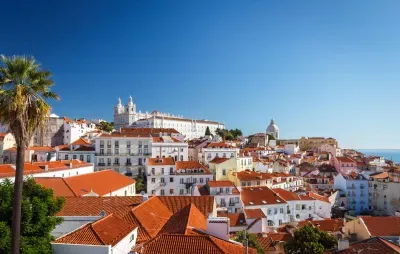Praça do Comércio
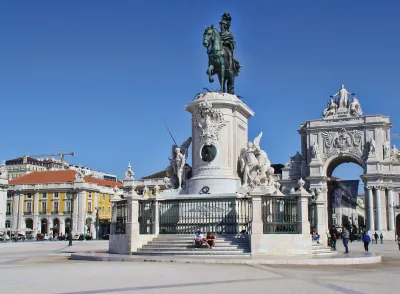
No visit to Lisbon would be complete without a stop-off at the majestic Praça do Comércio, one of Europe's largest squares, surrounded on three sides by classical 18th century buildings and opening up on the south side to the Tagus River estuary. This plaza was once known as the "gateway to Lisbon", in recognition of the time when merchant ships arriving at the port would offload their cargo here. This was also where passenger ships disembarked.
Arco Triunfal da Rua Augusta

Positioned on Praça do Comércio and acting as a grand opening onto the Baixa's central Rua Augusta, this ornate and imposing archway is also known as the Rua Augusta Arch.
As the name hints, the Arco Triunfal was originally built to commemorate Lisbon’s reconstruction following the devastating earthquake in 1755, although the version that exists today dates from 1875.
Igreja da Conceição Velha
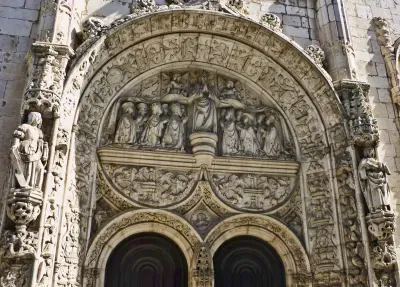
Built around 1500 on the site of an ancient synagogue, and also known as Our Lady of the Conception, this was once the second largest place of worship in Manueline Lisbon. Nowadays this historic church, with an ornate façade reminiscent in style and grandeur of the Jerónimos Monastery in Belém, seems to be sandwiched between two more pedestrian buildings down a largely overlooked street. But therein lies the story of this building.
Igreja de Santo António
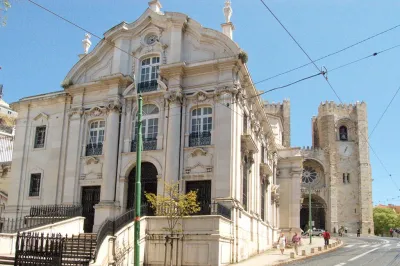
Saint Anthony is Lisbon’s main patron saint and this church, dedicated to his memory is thought to have been built on the exact spot where he was born in 1195.
Lisbon Cathedral

Reputed to be the oldest building in Lisbon, the cathedral (Sé de Lisboa) certainly has the appearance of being built to last. Compared to the frivolous Manueline architecture of the Jeronimos Monastery the Romanesque lines of the cathedral appear quite austere. Along with castellated walls and arrow slits in the towers Lisbon Cathedral, like other Portuguese cathedrals of the period, had the appearance of a fortress as much as a church.
Elevador de Santa Justa
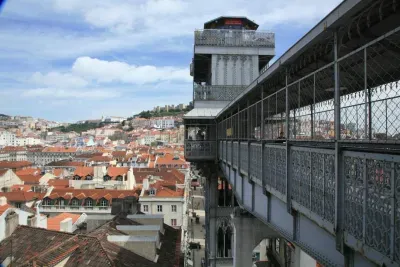
The Elevador de Santa Justa (Santa Justa lift) is a 47 metres (145ft) Lisbon's only remaining vertical elevator and connects Rua do Ouro in the Baixa to Largo do Carmo near Bairro Alto. It was built, along with several other cable powered urban lifts and funiculars, in a time before cars and the Metro. Whilst this may sound quite utilitarian and uninteresting nothing could be further from the truth.
Basílica de Nossa Senhora dos Mártires
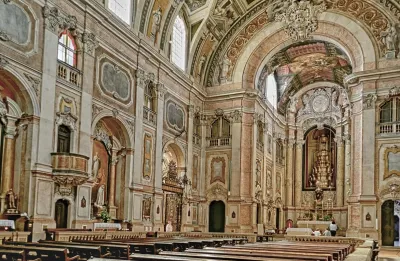
The Basilica of Our Lady of the Martyrs (Basílica de Nossa Senhora dos Mártires) is one of a trio of Rococo / Baroque churches built within a stone's throw of each other on Chiado's Rua da Garrett. This and the other two strikingly similar churches were built in the late 18th century after much of the area was flattened by the great earthquake of 1755.
Convento do Carmo
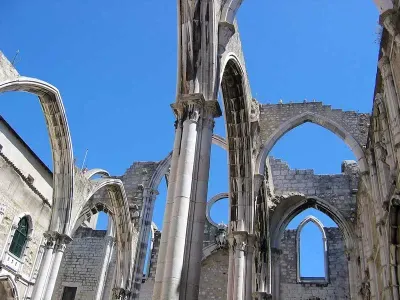
Mediaeval convent that was ruined in the great earthquake of 1755. Set overlooking the city the ruins provide a poignant reminder of the destruction wrought on Lisbon. The convent is also home to an archaeological museum with exhibits including a Peruvian mummy.
Praça da Figueira

Praça de Figueira is a large square in the centre of Lisbon, one of three in the Baixa district. The name translates as fig tree square, although there is little sign of the original trees. The square was created in the 18th Century after the Lisbon earthquake of 1755 had destroyed the buildings that had stood on the site beforehand (as well as much of the rest of the city). It had previously been the location of Lisbon’s main hospital; the Real de Todos os Santos.
Castle of Sao Jorge

Set in a commanding position overlooking Portugal's capital, the Castelo de São Jorge dates back to Moorish times. The existing citadel is mainly medieval and contains the ruins of the royal palace and gardens
